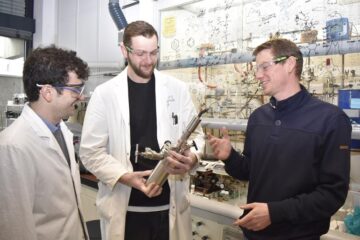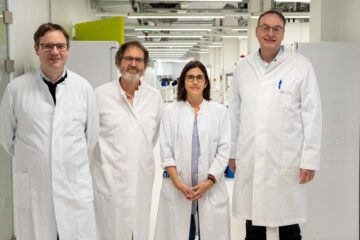Syringe exchange programs have social dimension

On the other hand, no unequivocal support was found for the assumption that syringe exchange programs help reduce HIV and hepatitis infections among injecting abusers. Nor does low coverage of needles and syringes via syringe exchange programs seem to lead to greater risk of infection. This is shown in a dissertation from Mid Sweden University.
“Syringe exchange is used by various categories of abusers, and the patterns of use vary greatly. This concerns how long they participate, how often they make their visits, and what services they request,” says Nils Stenström. One surprising finding was that a large proportion of the visitors, nearly half, visited the clinic without exchanging syringes. These visits are social in nature – nevertheless they are connected with reduced risks of infection. This shows that the associations between syringe exchange, risk behaviour, and infection risks are complex, according to Stenström.
The studied followed 3,660 injecting abusers taking part in the syringe exchange program in Malmö, Sweden, over a 15 year period. Nearly 180,000 visits served as the basis for comprehensive analysis of how the program is used and developments regarding contagion, HIV and hepatitis testing, vaccinations, and social development. The study is probably the largest ever undertaken in the world of the long-term effects of a syringe exchange program.
Analyses of the visits data reveal that the longer individuals participate in the program, the more often they visit the clinic. But the hope that syringe exchange would constitute a springboard to regular public care and treatment options for drug abusers was not realized to any great extent. On the other hand, the clinic itself, through extensive testing, vaccination, and counseling, did take on an important role in general preventive health efforts.
The title of the dissertation is Syringe exchange for injecting drug users – A longitudinal study of participants in a syringe exchange programme in Malmö, Sweden.
Nils Stenström, +46 63-16 59 04, +46 70-368 5832, E-mail nils.stenstrom@miun.se
Media Contact
More Information:
http://www.vr.seAll latest news from the category: Health and Medicine
This subject area encompasses research and studies in the field of human medicine.
Among the wide-ranging list of topics covered here are anesthesiology, anatomy, surgery, human genetics, hygiene and environmental medicine, internal medicine, neurology, pharmacology, physiology, urology and dental medicine.
Newest articles

Efficient, sustainable and cost-effective hybrid energy storage system for modern power grids
EU project HyFlow: Over three years of research, the consortium of the EU project HyFlow has successfully developed a highly efficient, sustainable, and cost-effective hybrid energy storage system (HESS) that…

Safer alternative for an explosive reaction
The chemical industry has been using a reaction with explosive chemicals for over 100 years – now Mülheim scientists have discovered a safer alternative. The Ritter Group of the Max…

How immune cells communicate to fight viruses
Chemokines are signalling proteins that orchestrate the interaction of immune cells against pathogens and tumours. To understand this complex network, various techniques have been developed to identify chemokine-producing cells. However,…





















